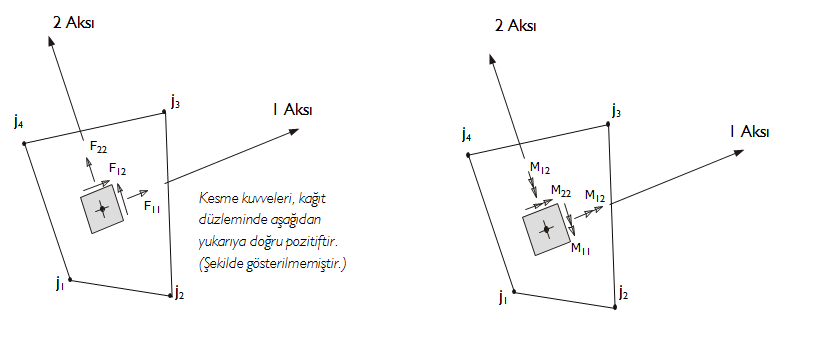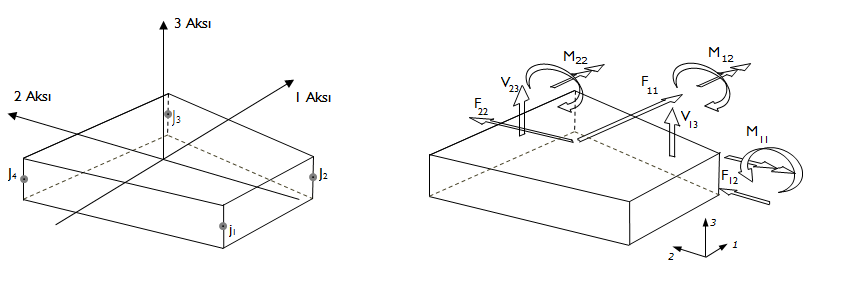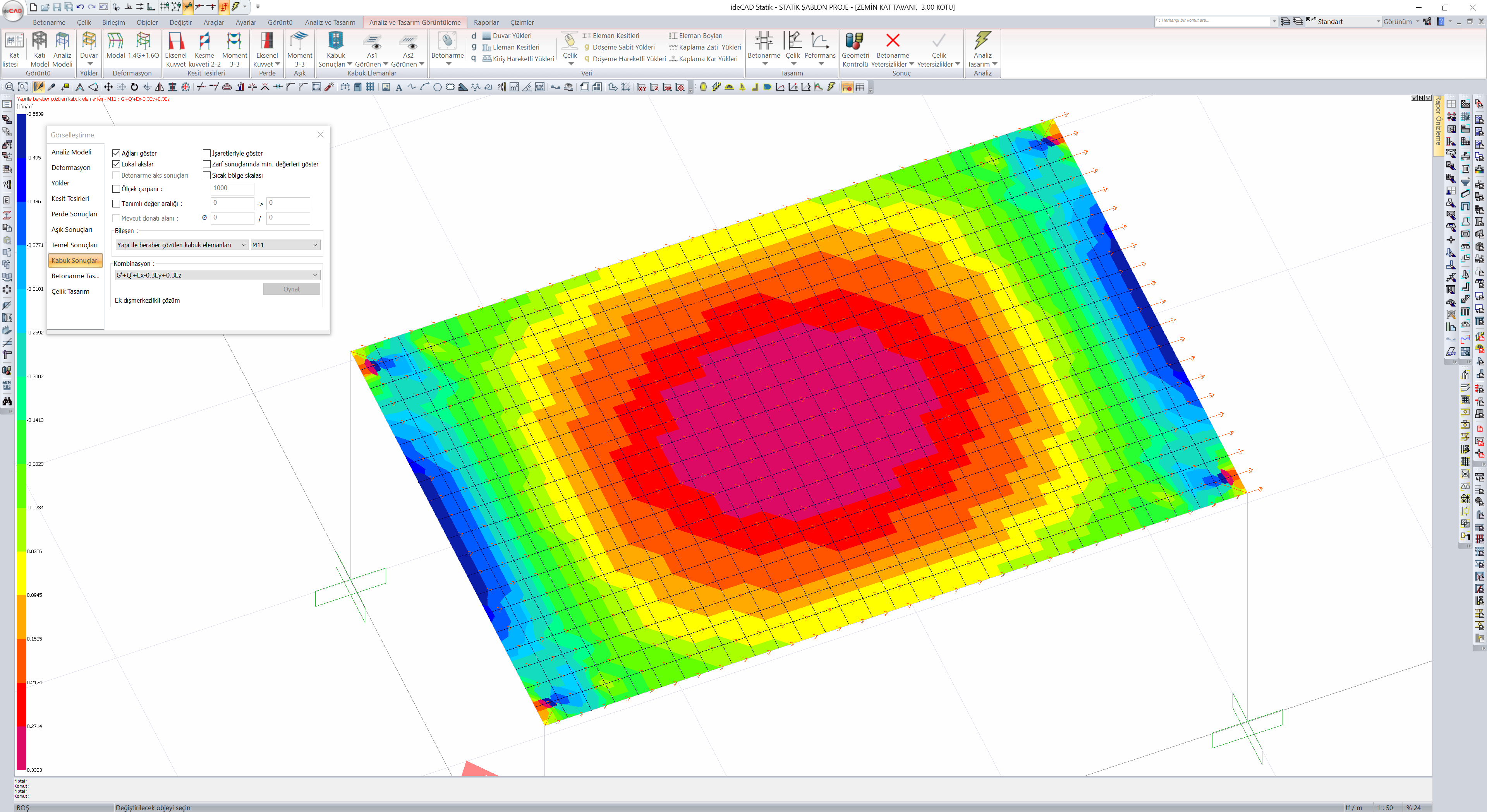Local Axes of Shell Elements
As a result of three-dimensional analysis of shell finite elements (slabs, curtains and polygon walls), they generate stresses and forces per unit length. The directions of these stresses and forces per unit length are determined according to the local axes of the shell finite element.
1- Axes
The axes and joint point numbers of the shell element are shown in the figure.

2- Direction and meaning of Shell element forces
Shell finite element forces are obtained as a result of stresses formed by shell finite elements in three dimensional analysis.

M11, M22
Bending moments (tfm / m or kNm / m) occurring around axes 1 and 2 and falling per unit length. They are also called out-of-plane bending moments.
M12
It means unit length planar torsion moment (tfm / m or kNm / m). It is also called the in-plane torsion moment.
V13, V23
Shell is the unit-length shear forces (tf / m or kN / m) at the surface of the finite element and perpendicular to the plane of the finite element. It is also called the out-of-plane shear force.
F11, F22
In the direction of interest, the admission is the tensile and compressive forces per unit length (tf / m or kN / m) parallel to the plane of the finite element. It is also called in-plane pressure-pull forces.
F12
The shell is the unit-length shear forces (tf / m or kN / m) parallel to the finite element plane. It is also called in-plane shear forces.
Shell finite element results can be viewed from the "Shell Results" tab in the Analysis Model.

In this section, the forces per unit length of M11, M22, M12, V13, V23, F11, F22 and F12 can be read by moving a mouse over each of the shell finite elements. Since these forces are obtained from the stress results, they will behave in parallel with the stress results. At the same time, when the "Local Axes" button in the "Shell Results" tab is activated, the direction of the related force is shown with red arrows.
